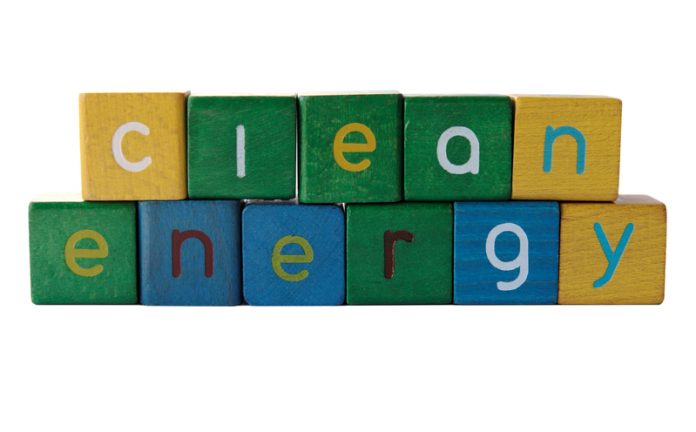David Mooney, Director of the Strategic Energy Analysis Center, at the US Department of Energy’s National Renewable Energy Laboratory, explains how understanding energy is important to the success of clean energy technologies
Moving from today’s energy system to a clean energy system will require a profound transformation. While today’s energy system is largely carbon-based and not very efficient, there is great potential for a future energy system to harness the wind and sun and other sustainable energy sources. It could make energy supplies more accessible, affordable, carbon-neutral, and secure while powering economic development.
For a range of renewable and energy efficiency technologies, costs are dropping and adoption is increasing sharply. Energy system transformation is indeed already underway.
Transformation requires imagination
The US Department of Energy’s National Renewable Energy Laboratory (NREL) is well-positioned to assess and understand the potential for a clean energy future. An objective, credible, and robust analysis capability has been part and parcel of NREL’s mission from our inception as the Solar Energy Research Institute in 1977. Starting with techno-economic analysis, our early researchers understood the vital role of providing technology-neutral analysis to ensure that innovations developed in the lab fit the needs of energy consumers. Today, NREL continues to develop tools that increase our understanding of energy technologies, resources, infrastructure, markets, and, policies along with their connections to economic, environmental, and security priorities.
Groundbreaking analyses conducted by NREL, other US national labs, and our many domestic and international partners have helped redefine what’s possible for renewable energy. For example, in one project NREL and its partners have worked to create a computer model of one of the most complex systems ever built. This system, the eastern part of the North American power grid, is likely to host an increasing percentage of renewable energy in years to come. Understanding how this system can be reliably and affordably operated under a variety of scenarios is important to the success of clean energy technologies. Through innovations in capacity expansion and production cost modelling, we are engaged in detailed assessments of the challenges utility operators may face in scenarios of high penetrations of variable generation sources such as wind and solar. Critical to an energy systems transformation is the coupling of these scenario analyses with comprehensive sustainability analysis to compare the life-cycle impacts of renewable and conventional technologies on the environment including impacts on land, water, and air.
We also know that our future is likely to include many energy technologies – not just renewables. It is therefore critical that scenario analyses include a variety of combinations of renewables, fossil, and nuclear energy sources, which require a detailed understanding of the operational characteristics of all conventional and renewable generators. Of particular note is NREL’s growing body of work on the nexus of natural gas and renewable energy, which offers insights on multiple pathways to lower-carbon energy systems. Collectively, our body of analysis work illuminates what is feasible for renewable energy today, and where changes to today’s system could lead to enhanced prospects for cleaner, more secure energy systems over time.
Transformation requires information
NREL aligns its core energy analysis, technology development, and deployment capabilities and teams so that insight gained at all scales inform the next set of research priorities. Through numerous projects to support renewable technology deployment at scales from campus to community to continent, we collect operational insights on what is practical and what is possible. By doing so, our energy analysis efforts support and complement our science and technology work. Our analyses create a feedback loop between ideas and implementation and allow NREL to continually ask: What’s needed next and how do we achieve it?
Transformation requires collaboration
NREL’s analytical work doesn’t stop at our lab’s boundary or even our nation’s borders. NREL works with a wide variety of domestic and international partners to provide tools, insights, and assistance to help policymakers, investors, federal agencies, utilities, state and local government, technical institutions, and governments around the world make informed energy choices in the context of environmental, security, and economic priorities. We collaborate with partners to build global networks that support low-emission economic development. Within these networks, developing countries can partner with subject matter experts to gain insights into, and assistance with, the incorporation of renewable energy into national power systems.
At home and around the world, NREL analysis informs policy and investment decisions as energy-efficient and renewable energy technologies advance from concept to the commercial application to market penetration. We continue to make progress toward transforming our energy systems to be cleaner, more reliable, and more secure, and we embrace the opportunities ahead. Every day, NREL and its partners are reimagining what’s possible and leading the way to a clean energy future.
NREL develops clean energy and energy efficiency technologies and practices, advances related science and engineering, and provides knowledge and innovations to integrate energy systems at all scales. Learn more at http://www.nrel.gov/analysis/ and https://youtu.be/XtV574KBEbU .
David Mooney
Director
Strategic Energy Analysis Center – US Department of Energy’s National Renewable Energy Laboratory











